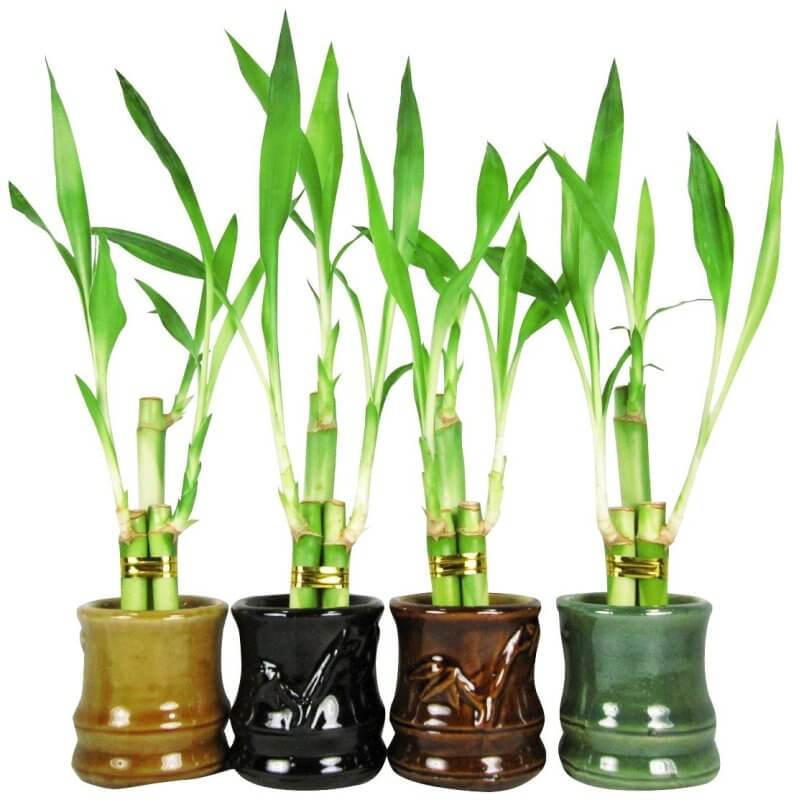Compost is a crucial ingredient for the success of your raised garden bed. It enhances the soil’s quality, boosts fertility, and provides vital nutrients for optimal plant growth. However, determining the appropriate amount of compost to add requires careful consideration of factors such as the type and quality of compost, as well as the size of your bed.
Post Summary:- Adding compost to a raised garden bed improves soil quality and fertility.
- For top-dressing the soil, apply 1/4 to 1/2 inch of compost. Mix 1 to 2 inches into the soil.
- It’s essential to incorporate the compost to a depth of 6 to 8 inches for optimal results.
- Avoid using more than 25% to 30% compost in soil blends, and no more than 25% in containers or raised beds to prevent nutrient imbalances.
- Consider the type and quality of compost, including its appearance, smell, and absence of rocks or debris when choosing the right product.
Types of Compost and Choosing the Right Product
When it comes to compost, there are various types available, each offering unique benefits for your garden. Understanding the different options and choosing the right compost product is essential for optimal plant growth and soil health.
1. Yard debris compost: Made from leaves, grass clippings, and small branches, yard debris compost is an excellent source of organic matter. It helps improve soil structure and adds essential nutrients.
2. Animal manure compost: Composted animal waste, such as cow or horse manure, is rich in nutrients and adds valuable organic matter to the soil. However, it’s important to use well-aged or composted manure to prevent the risk of weed seeds and potential pathogens.
3. Food scraps compost: Composting food scraps reduces waste and provides a nutrient-rich soil amendment. It’s essential to use compost derived from organic food waste to avoid potential pesticide contamination.
4. Mushroom production waste compost: Compost from mushroom production waste is an excellent choice for improving soil fertility. It contains beneficial nutrients and promotes healthy plant growth.
5. Vermicompost: Vermicompost is created through the process of vermicomposting, which involves the use of earthworms to break down organic materials. This type of compost provides a rich source of nutrients and microbial activity, enhancing soil health and plant growth.
When choosing the right compost product, look for a dark, crumbly appearance, earthy smell, and absence of rocks or debris. Additionally, consider factors such as weed seeds, moisture content, and laboratory analysis results to ensure the compost meets your specific needs. By selecting the appropriate type of compost, you can provide your plants with the organic matter and essential nutrients they need to thrive.
| Type of Compost | Benefits |
|---|---|
| Yard debris compost | Improves soil structure Provides essential nutrients |
| Animal manure compost | Rich in nutrients Adds organic matter to the soil |
| Food scraps compost | Reduces waste Provides nutrient-rich soil amendment |
| Mushroom production waste compost | Improves soil fertility Contains beneficial nutrients |
| Vermicompost | Rich source of nutrients and microbial activity Enhances soil health and plant growth |
“Using the right type of compost can enhance soil fertility and provide essential nutrients for optimal plant growth.”
Calculating the Amount of Compost Needed
When adding compost to your raised garden bed, it’s essential to calculate the right amount to ensure optimal plant growth. The volume of compost needed depends on the surface area of your bed and the desired thickness of the compost layer. To determine the volume, follow these simple steps:
- Multiply the length of your garden bed by its width to calculate the surface area.
- Decide on the desired thickness of the compost layer and convert it to feet.
- Multiply the surface area by the compost layer thickness to get the volume in cubic feet.
Alternatively, you can use an online compost calculator to simplify the calculation process. These tools allow you to input the dimensions of your garden bed and the desired compost layer thickness, providing you with the exact amount of compost needed. This can be especially helpful for larger projects or if you prefer a more precise calculation.
For smaller jobs, bagged compost is an excellent option. A single 1-cubic foot bag of compost can cover approximately 12 square feet of area with a 1-inch depth. This convenient option is perfect if you have a smaller raised bed or only need a small amount of compost.
On the other hand, for larger projects, bulk compost is the way to go. It is usually purchased in cubic yards, allowing you to get the right amount for your raised garden bed without the hassle of multiple bags. When ordering bulk compost, make sure to know the dimensions of your bed and the desired compost layer thickness to ensure an accurate delivery.
Compost Volume Calculation Example
| Garden Bed Dimensions (feet) | Thickness of Compost Layer (inches) | Surface Area (square feet) | Volume of Compost Needed (cubic feet) |
|---|---|---|---|
| 8 x 4 | 2 | 32 | 64 |
| 12 x 6 | 3 | 72 | 216 |
| 10 x 3 | 1 | 30 | 30 |
Using the table above as an example, you can see that a garden bed measuring 8 feet by 4 feet with a 2-inch compost layer would require 64 cubic feet of compost. Similarly, a larger bed measuring 12 feet by 6 feet with a 3-inch layer would need 216 cubic feet. It’s essential to adjust the calculations based on the specific dimensions of your raised garden bed and the desired thickness of the compost layer.
By accurately calculating the amount of compost needed for your raised garden bed, you can ensure that your plants have access to the right amount of nutrients and enjoy optimal growth and health.
Using Compost in Raised Beds and Landscape Areas
When it comes to vegetable gardens, raised beds, and landscape areas, incorporating compost can be highly beneficial as a soil amendment. Compost helps improve soil structure, moisture retention, and nutrient availability, creating a favorable environment for plant growth. Here are some guidelines on how to effectively use compost in your raised beds and landscape areas to optimize your gardening results:
1. Vegetable Gardens:
In vegetable gardens, adding compost to your raised beds is essential for maintaining soil fertility and promoting healthy plant growth. To start, spread 3 to 4 inches of compost on new beds and 1/4 to 1 inch per year on existing beds. After spreading the compost evenly, incorporate it into the top 8 to 12 inches of soil. This process improves soil structure, enhances nutrient availability, and promotes root development. When planting, make sure to dig planting holes and install your vegetable plants in the amended soil for optimal growth.
2. Raised Beds:
In raised beds, the process of incorporating compost is slightly different. Begin by breaking up the soil surface at the bottom of the bed. Then, add 2 to 3 inches of compost and mix it thoroughly with the existing soil. This integration allows the compost to blend with the soil, providing a rich, fertile medium for your plants. Additionally, you can increase the soil depth of your raised beds by adding pathway soil, further enhancing the growing environment for your plants.
3. Landscape Areas:
When using compost in landscape areas, it is important to spread it evenly and incorporate it into the soil before planting. Start by spreading 3 to 4 inches of compost over the desired area. Then, use a garden fork or tiller to mix the compost thoroughly into the soil. This incorporation process ensures that the compost is evenly distributed, enriching the soil and providing a prosperous environment for your landscape plants.
Using compost in your raised beds and landscape areas offers numerous advantages, including improved soil fertility, enhanced plant growth, and increased moisture retention. By following these guidelines, you can effectively utilize compost to create thriving and productive growing spaces.

Remember, moderation is key when applying compost. Be mindful of the recommended compost depths for different areas to prevent nutrient imbalances. By incorporating compost into your gardening practices, you can achieve healthier, more vibrant plants and enjoy the rewards of a flourishing garden.
What is the Proper Amount of Water to Give to an Aloe Plant in a Raised Garden Bed?
The watering needs of aloe plants in a raised garden bed depend on various factors. Generally, it is important to give them enough water to keep the soil lightly moist, but not overly saturated. Adequate drainage is crucial to prevent waterlogged roots. Monitor the soil moisture level and adjust watering accordingly to maintain a balanced environment for your aloe plant to thrive.
Conclusion
Adding compost to your raised garden bed is a crucial step in achieving optimal plant growth and creating a thriving growing environment. By incorporating the right type of compost in the appropriate amount, you can significantly improve the quality of your soil and provide essential nutrients to your plants.
It is important to carefully consider the type and quality of compost you choose. Look for compost that has a dark, crumbly appearance and a pleasant, earthy smell. Avoid compost that contains rocks, debris, or weed seeds. Checking the laboratory analysis results can provide valuable information about the compost’s organic matter, nutrient content, and pH level.
When applying compost, calculate the volume needed based on the surface area and desired thickness of the compost layer. This will ensure that you add the right amount for optimal results. Remember to incorporate the compost into the soil to a depth of 6 to 8 inches, allowing it to improve soil structure and nutrient availability.
Whether you’re using compost in vegetable gardens, raised beds, or landscape areas, following the recommended guidelines will help you achieve the best results. By avoiding excessive compost application, you can prevent nutrient imbalances and potential harm to your plants. Take the time to properly use compost in your raised garden bed, and you’ll be rewarded with healthier, more productive plants.
How Much Compost Should I Use for a Raised Garden Bed of a Certain Depth?
When determining how much compost to use for a raised garden bed, it’s essential to consider the typical depth of raised garden beds. For a standard depth of a raised garden, which is typically around 8-12 inches, a good rule of thumb is to apply a 2-3 inch layer of compost on top of the existing soil. This ensures adequate nutrients and organic matter for healthy plant growth.
FAQ
How much compost should I add to my raised garden bed?
When top-dressing the soil, it is recommended to add 1/4 to 1/2 inch of compost. When mixing it into the soil, add 1 to 2 inches. Incorporate the compost to a depth of 6 to 8 inches.
What types of compost are available and how do I choose the right one?
Compost can be made from yard debris, forestry products, crop residue, animal manures, food scraps, mushroom production waste, and vermicompost. Choose compost that has a dark, crumbly appearance, passes through a ⅜-inch screen without any large particles, has an earthy smell, and does not contain rocks or debris.
How do I calculate the amount of compost needed for my raised garden bed?
Multiply the surface area of the bed (length x width) by the thickness of the compost layer (converted to feet) to determine the volume of compost needed in cubic feet. Alternatively, you can use an online compost calculator for simplified calculations.
How should I use compost in raised beds and landscape areas?
For new vegetable beds, add 3 to 4 inches of compost. For existing beds, add one-quarter to 1 inch per year. Incorporate the compost into the top 8 to 12 inches of soil. For raised beds, break up the soil surface at the bottom, add 2 to 3 inches of compost, and mix it with the existing soil. In landscape areas, spread and mix 3 to 4 inches of compost into the soil before planting.
What are the benefits of adding compost to a raised garden bed?
Adding compost improves soil quality, enhances soil structure, retains moisture, provides essential nutrients to plants, and promotes optimal plant growth.









